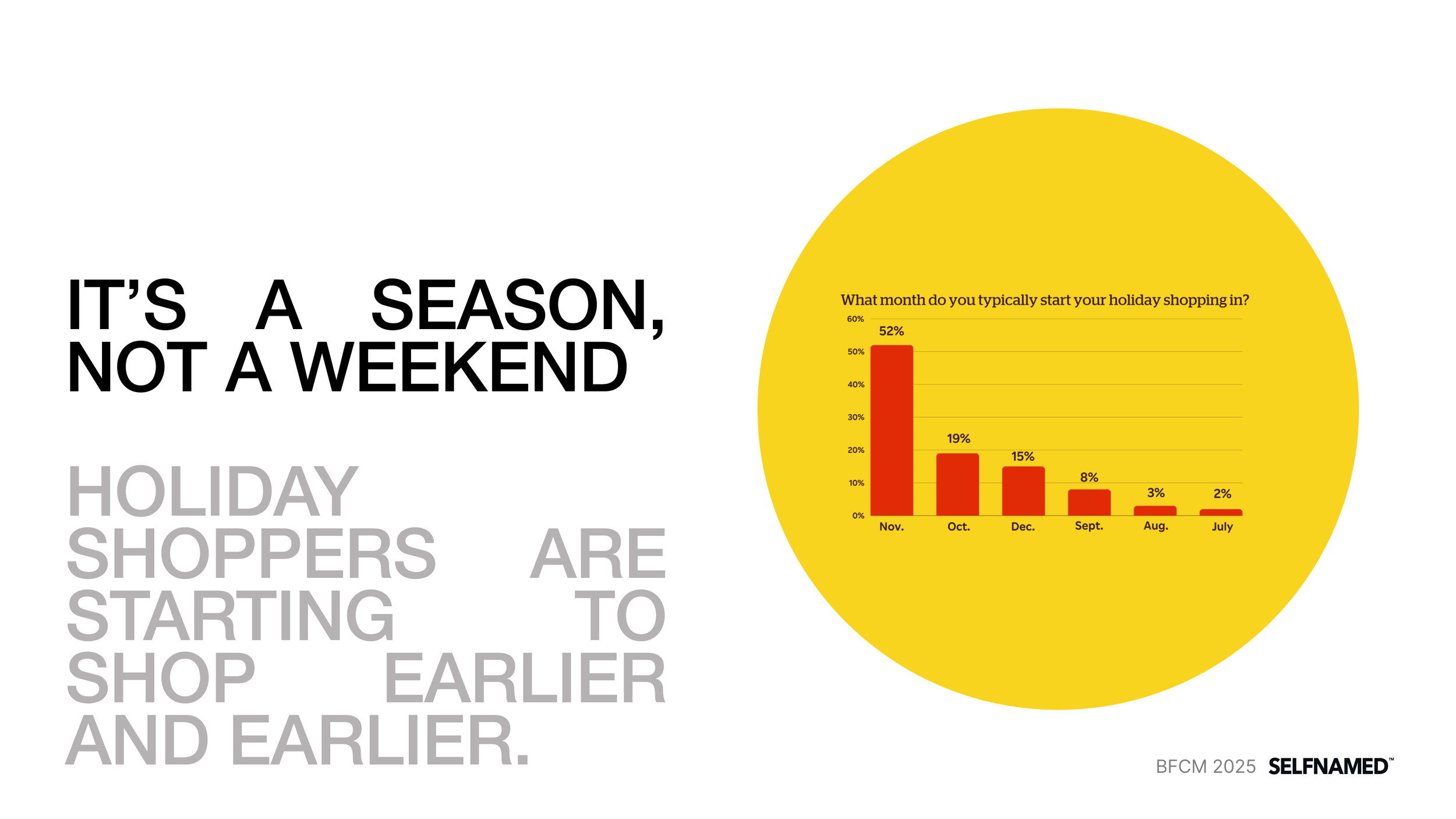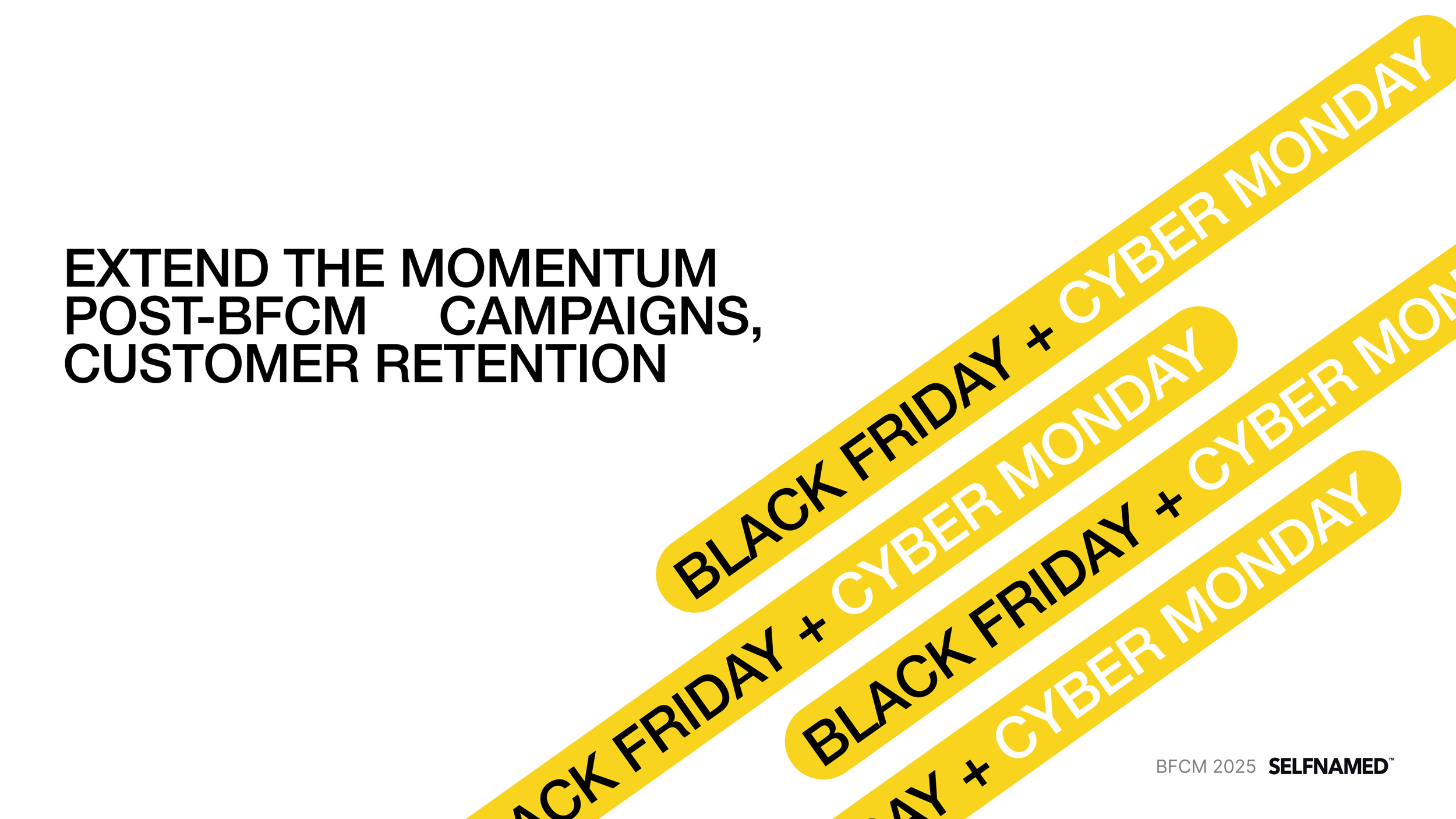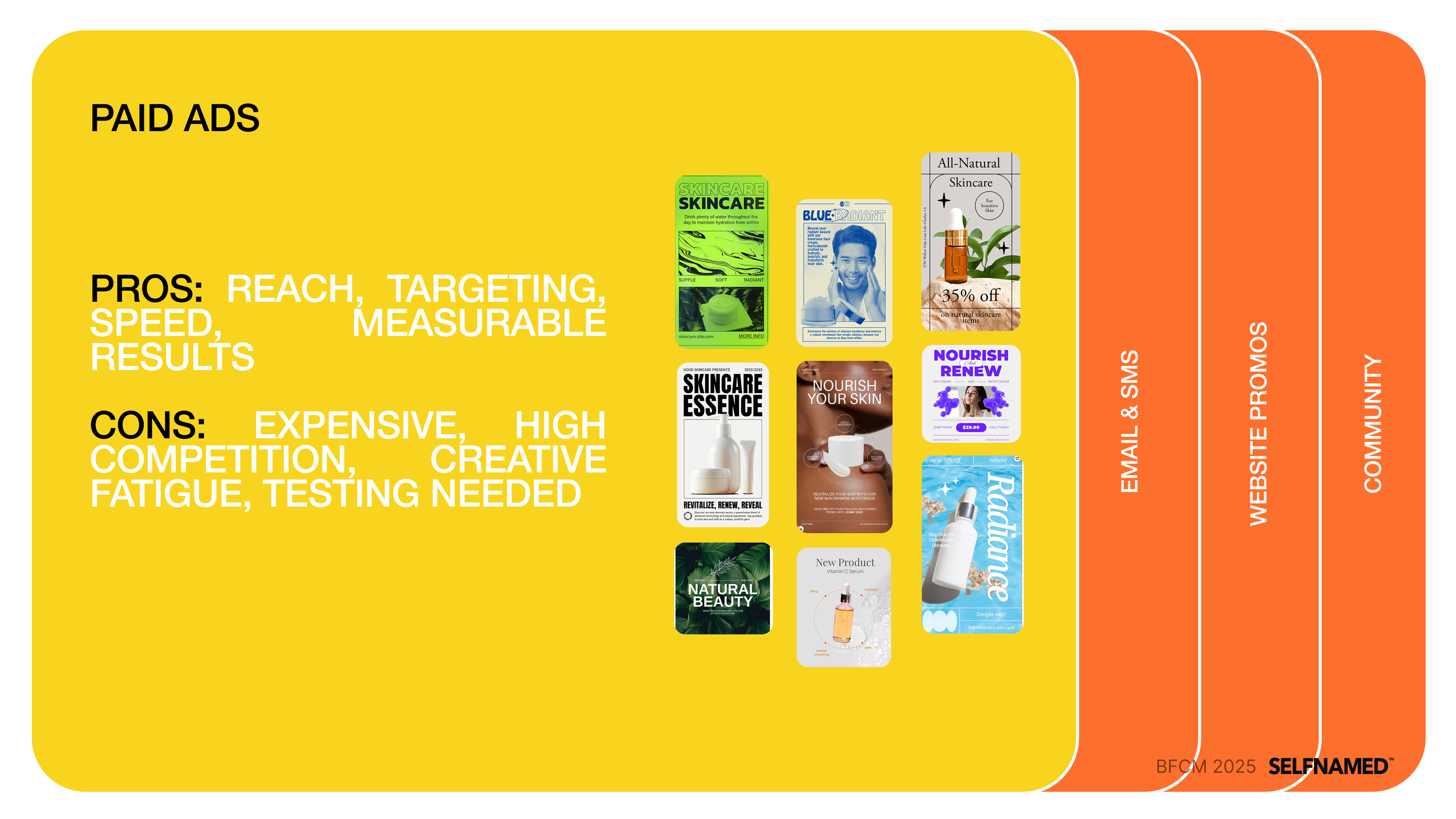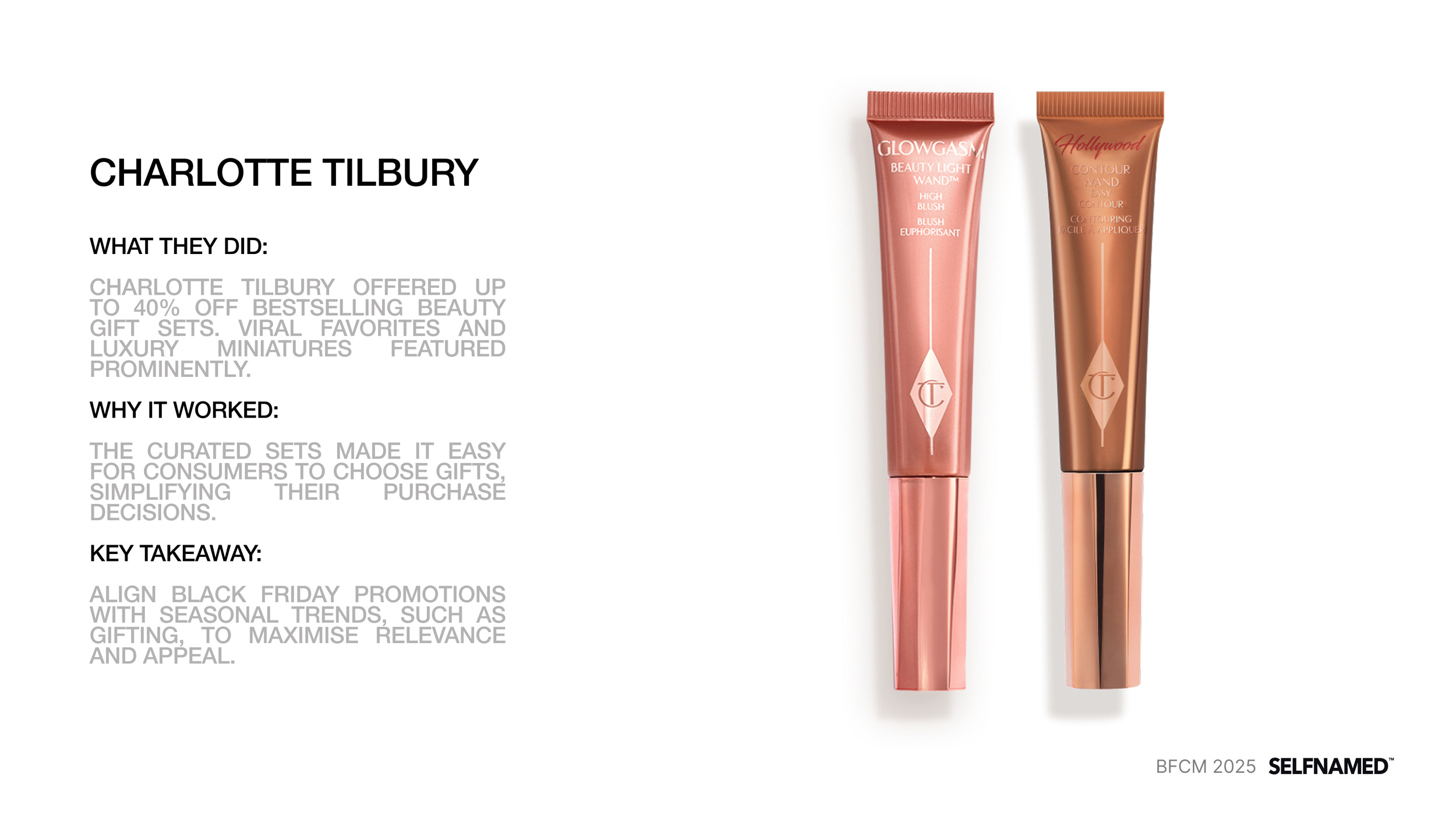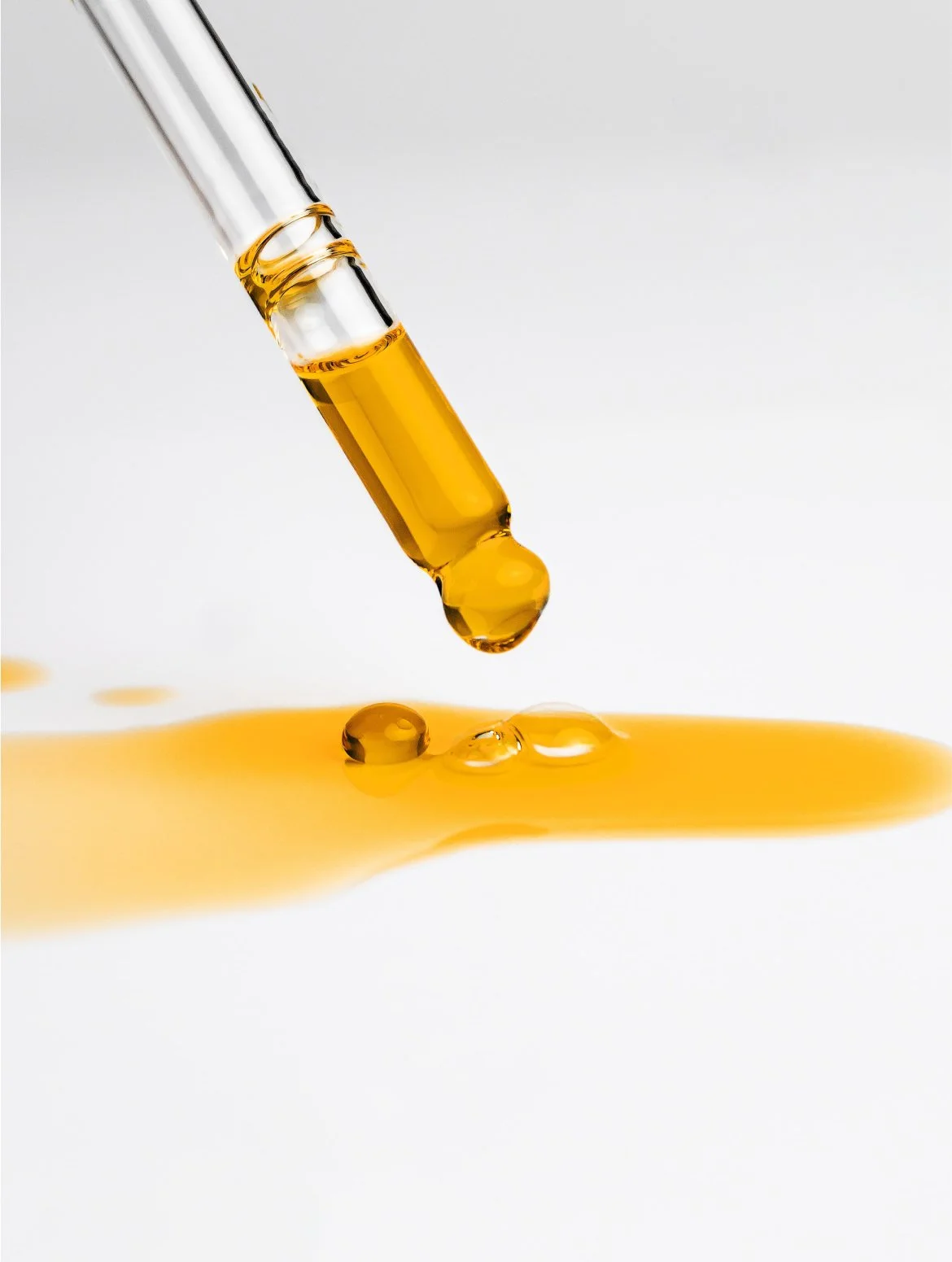Black Friday & Cyber Monday 2025 Masterclass for Beauty Brands
Table of Contents
Every autumn, the same race begins. Beauty (and other) brands rush to launch bigger discounts, louder ads, and faster campaigns.
But after numerous holiday seasons working with thousands of ecommmerce and retail businesses, I have learned that the brands who truly win on Black Friday and Cyber Monday aren’t the loudest. They’re the most prepared.
So this article is here to tell you have to be the brand that starts early, stays consistent, and focuses on turning that short-term rush into long-term customer relationships.
The scale of opportunity
Let’s start with the big picture – the sheer scale of the opportunity. According to Adobe Analytics, last year, Black Friday generated $10.8 billion in online sales in the US alone and brought in 87.3 million online shoppers globally. Between November 1 and December 31, total online spending hit $241.4 billion. That’s the kind of volume that can make or break a year for many beauty and skincare businesses.
For skincare brands, it’s a reminder that people are ready to invest in themselves. But to capture that demand, you need to meet customers where they actually shop. Nearly 70% of all purchases during BFCM last year happened on mobile, which means your campaign creative, site experience, and checkout flow have to work flawlessly on a small screen. Mobile isn’t a secondary touchpoint. It’s where your conversions live.
Skincare brands are in a strong position here. According to Shopify’s data, cosmetics is one of the top three best-performing categories, right alongside clothing and fitness. Wellness continues to dominate consumer behavior because people are investing in looking and feeling better.
At Selfnamed, we saw this first-hand in 2024: our Peptide Anti-Age Serum, Anti-Age Day Cream, and Natural Retinol Alternative Oil Serum were the best sellers of the season. Anti-aging products continue to lead the conversation, and that’s not changing in 2025.
Collection boxes followed a similar trend. The Anti-Ageing Box, Boost Serum Box, and Acne Care Collection Box all performed exceptionally well. And it’s easy to see why. These sets are not only high-value and giftable, they also reduce decision fatigue. During the holiday rush, simplicity sells.
What’s different in 2025
If 2024 taught us anything, it’s that Black Friday is now a season, not a weekend. Shoppers start earlier and buy longer into December. October is already the second-best sales month of Q4, according to Rakuten Advertising. So if you haven’t started preparing yet, this is your week one.
This year, tariffs and inflation have changed how people spend. “Eight out of ten customers are adjusting their buying behavior,” says Nike Laufmanis, Head of Sales at Selfnamed. “They’re not necessarily spending less money, but they’re buying fewer products that feel more meaningful.” That shift means skincare brands need to lead with value and education, not just discounts.
Consumers want to know why a product matters. What problem it solves. Why it’s worth their attention. This is where clear messaging beats clever copy every time.
Another key insight we’ve seen: repeat customers are driving more BFCM revenue than ever. Paid ads are competitive and expensive during Q4. Supply and demand make cost-per-click rise across the board.
So, what gives you the advantage? Your own channels. In last year’s Klaviyo data, 75% of repeat purchases came from email, 65% from SMS, and about half from organic or direct traffic. Owned audiences are your best defense against rising ad costs.
Consistency across channels is equally critical. A campaign isn’t truly omnichannel unless the story matches everywhere. If your email says 25% off, your ad and your homepage should echo that same number, color, and mood. When people see one unified campaign, they trust it faster.
And yes, Buy Now, Pay Later continues to boost conversion rates for skincare brands. Smaller installment payments make high-value products feel more accessible without cheapening the brand. It’s worth integrating if you haven’t already.
Strategies that work
Before diving into the tactics, it’s worth setting the scene. Every BFCM season starts with the same questions: When should you begin preparing, and how can you stand out when everyone is shouting at once?
The truth is, most beauty entrepreneurs leave it too late. By the time November arrives, the audience’s inboxes are already overflowing and ad costs are climbing fast. This section is about what you can do now to stay ahead of that noise.
Build anticipation
The holiday season rewards brands that start conversations early. Talk to your customers before your discounts go live. Share teasers, countdowns, and early access links. You can even gamify it! hidden codes, scratch-to-reveal discounts, or small early-bird campaigns for your email list. The key is not gimmicks but engagement. People love feeling like insiders.
When we asked our audience if they had started preparing, most said no. That’s common in early October. But if you haven’t started yet, think of today as day one.
Win attention with clarity
Too often, brands overcomplicate offers. Don’t.
Make your message clear in one glance: “30% off everything,” or “Gift with purchases over €125.” Add one urgency cue, be it a clean countdown or an “ends Sunday” line. Not five different pop-ups, each with a different offer.
This season is also the perfect time for limited editions or seasonal designs. Scarcity works, and it creates a reason to act now. A product available only in November carries emotional weight.
Maximize conversions
This is the unglamorous but essential part of BFCM prep: optimization.
Make sure your checkout process is flawless, especially on mobile. Display product and company reviews. Use known payment options, such as Apple Pay, Google Pay, PayPal. If your products carry certifications, display them clearly. These trust signals are the difference between “I’ll think about it” and “I’ll buy it now.”
Upsells and cross-sells also matter. Offer complementary items that make sense, like pairing a serum with a moisturizer.
And yes, test your checkout experience. Ask someone who’s never used your site to make a purchase. Watch where they pause. Those moments are your friction points.
Keep momentum after the sale
Black Friday and Cyber Monday should mark the start of a customer relationship, not the end of a campaign. Repeat customers spend 67% more over time than first-time buyers. Plan your retention before the sale launches: post-purchase flows, review requests, and follow-ups with practical skincare advice.
This is also where educational content pays off. Teach customers how to integrate their new product into a routine. When they understand how it fits their life, they come back.
The best-performing channels
OK, knowing what to do is step one. But where to do it? Once your strategy is clear, the next challenge is deciding which channels deserve your attention and how to make them work together instead of competing for it.
Paid ads are still the go-to for reach and visibility. They’re quick to scale and measurable. But costs surge in Q4, and creative fatigue sets in fast. Start testing early and keep your visuals fresh.
Email and SMS remain the most effective channels for conversion. Segment your audience, tailor your messaging, and send early access to your most engaged subscribers. The inbox will be crowded, so strong subject lines and timing will define your success.
Your website is not just the end of the funnel. It’s part of the campaign. Update your banners, hero images, and announcement bars to reflect the same offer. Publish shipping cut-off dates clearly in multiple places.
Community and influencers can amplify your message when chosen carefully. Choose creators whose tone and values fit your brand. When authenticity shows, engagement follows.
Beauty brands that got it right
Medik8 offered 25% off sitewide and added a complimentary gift for orders over £125. This encouraged larger baskets and rewarded higher-value customers.
The strategy worked because it blended generosity with a nudge toward higher spending, creating a psychological anchor that pushed the average order value up. It wasn’t just about the discount, it was about making the customer feel like they earned something extra.
Charlotte Tilbury took a more curated approach, offering up to 40% off their best-selling beauty gift sets. These ready-to-buy collections simplified decisions for overwhelmed holiday shoppers.
When customers land on your store and see a hundred products, they can easily freeze. Simplified sets remove that friction, making it easier to say yes. Their campaign also aligned with how people actually shop during the holidays: for gifts, not individual items.
Mented Cosmetics turned BFCM into a list-building opportunity. They gave early access to shoppers who subscribed to SMS, growing their owned audience while boosting sales.
It’s a great example of how BFCM doesn’t have to be just about revenue. You can use the attention you’re already getting to build future growth channels. Every sign-up is a chance to nurture loyalty long after the discounts end.
Each brand shows a version of the same strategy: pair a strong offer with a long-term goal.
Timeline for 2025
Think of your BFCM calendar and preparation checklist as a momentum curve, not a single date. Each phase builds on the last and sets up the next, so timing and pacing matter just as much as the offer itself.
October. Build Energy. This is the prep and testing phase. Finalize your campaign concepts, update your website visuals, check your mobile experience, and start building anticipation. Begin warming up your audience with teasers, early sign-up forms, and small exclusive offers for loyal customers. October is also the perfect time to test ad creatives and make sure your email flows work flawlessly before the rush.
Early November. Spark Excitement: Transition from teasing to early-bird offers. Reward subscribers or returning customers with early access codes. This helps you build engagement before paid ad costs peak mid-month. Make sure your website banners, emails, and ads are visually aligned. Cohesion now means recognition later.
Mid-November to Cyber Monday. Drive Revenue. This is the main event window. Launch your full campaigns, keep messaging clear, and rotate creative frequently to avoid ad fatigue. Double down on urgency by using timers, limited inventory cues, or product bundles that disappear after the weekend.
Early December. Sustain Momentum. Continue holiday campaigns but shift your tone from discounts to gifting and community. Share customer testimonials, product education, and how-to content. This keeps momentum going while nurturing post-purchase relationships.
Mid to Late December. Turn Revenue Into Retention. Push final shipping reminders and highlight digital gifts or printable vouchers for last-minute shoppers. After shipping cut-offs, pivot toward brand storytelling and self-care messaging. Send thank-you campaigns, review requests, and exclusive loyalty offers to convert first-time shoppers into repeat buyers.
If you map it out visually, the timeline looks less like a single weekend and more like a rhythm:
Build energy in October.
Drive revenue in November.
Turn it into loyalty in December.
What we’ve seen over the years is that the best-performing brands never rely on one viral post or one weekend. They build sequences: emails that educate before they sell, ads that align with on-site content, and offers that feel personal rather than generic. That cohesion doesn’t just drive sales, it builds recognition and trust that lasts long after the discounts end.
Final Thoughts
If there’s one truth that’s stayed constant after years of helping ecommerce brands through Q4, it’s this: the best campaigns aren’t built in a rush. They’re planned with clarity and intention.
Every year, we see the same pattern – the brands that panic in mid-November discount the hardest and earn the least. The ones that plan in October, test their funnels, and keep a clear narrative end up scaling confidently and sustainably.
You don’t need to outspend anyone. You just need to outprepare them.
Must read



